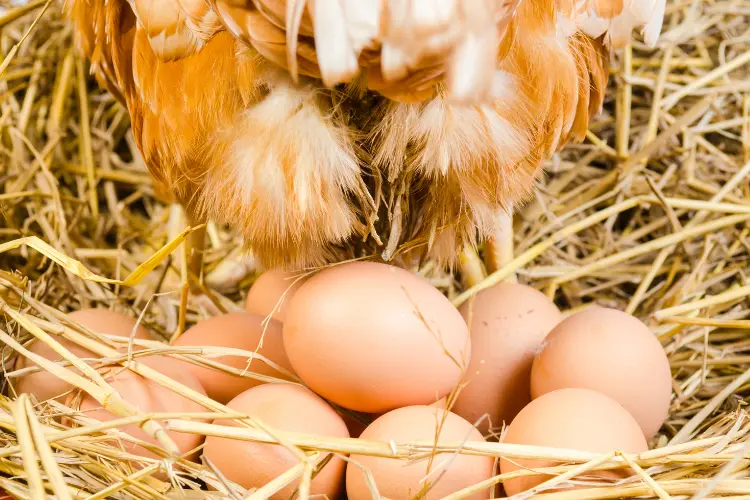Proven Methods to Boost Egg Production in Your Coop
Struggling to get your hens to lay the number of eggs you desire? It’s a common frustration for many backyard chicken owners. Whether you’re a seasoned poultry enthusiast or a newcomer to raising healthy chickens, low egg production can be a major pain point.
Fortunately, there are proven methods that can significantly boost egg production in your coop. So in this article, we will discuss how to transform your chicken coop into a true egg-laying haven.
How Often Do Chickens Lay Eggs?
Chickens, like many creatures, follow a natural rhythm when it comes to egg-laying. As they mature, typically around 5 to 6 months old, hens begin to lay eggs. Once their laying cycle is established, most hens will produce one egg per day, resulting in an average of about six eggs per week.
However, seasonal changes play a role in this process. In spring and summer, with longer daylight hours, egg production tends to increase, while fall and winter, with shorter days, hens may produce fewer eggs.
Additionally, during molting, a natural feather-shedding process that occurs in the fall or winter, hens may temporarily reduce or chickens stop laying eggs to redirect energy towards feather regrowth.
What Are the Factors That Influence Egg Production in Hens?
- Age: Egg production starts when hens reach sexual maturity. Younger hens may lay smaller eggs or experience irregular egg-laying patterns, but production usually stabilizes as they mature.
- Breed: Different chicken breeds have varying levels of egg-laying capabilities. Some breeds are specifically bred for high egg production, while others are more suited for meat or other purposes.
- Nutrition: Proper nutrition is crucial for optimal egg production. Hens require a balanced diet rich in protein, calcium, and other essential nutrients to produce eggs consistently.
- Lighting: Daylight plays a significant role in regulating a hen’s laying cycle. Longer daylight hours, such as in spring and summer, stimulate egg production, while shorter daylight hours, like in fall and winter, may reduce production.
- Environment: A clean, comfortable, and stress-free environment is essential for hens to lay eggs regularly. Comfortable nesting boxes with soft bedding and enough space for hens to move around can encourage them to lay in the designated areas.
- Health and Disease: Healthy hens are more likely to lay eggs regularly. Diseases, parasites, and stress can impact egg production negatively.
- Water Availability: Access to clean and fresh water is critical for overall health, including egg production. Dehydration can lead to reduced egg-laying.
- Temperature: Extreme temperatures, either too hot or too cold, can affect egg production. Providing adequate shelter and ventilation can help maintain a stable environment.
- Season: As mentioned earlier, egg production can vary with the changing seasons, primarily due to changes in daylight hours.
How to Increase Egg Production in Your Chickens
Offer a Balanced and High-Quality Diet
To increase egg production in your chickens, focus on providing a balanced and high-quality diet. Start by offering a commercial layer feed specifically formulated for egg-laying hens, as it contains the essential nutrients needed for optimal egg production.
Supplement their diet with occasional treats like scratch grains, oyster shell, fresh vegetables, and protein-rich snacks such as mealworms but be mindful of moderation to prevent nutritional imbalances.
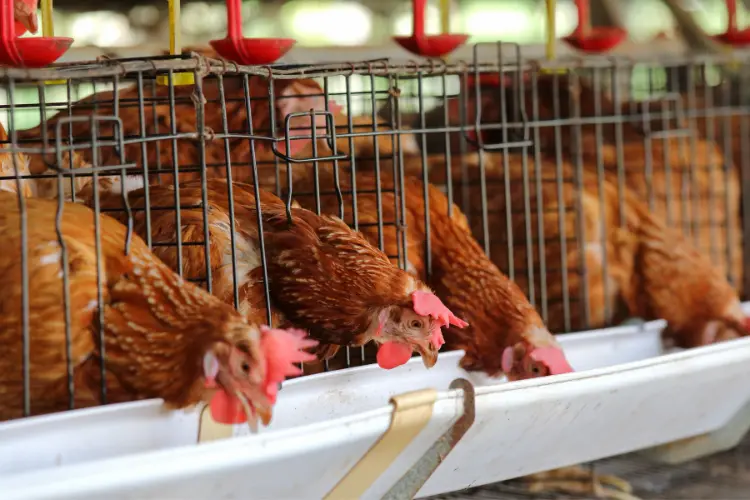
Ensure their feed includes adequate levels of protein, calcium, and other vital supplements like phosphorus, zinc, magnesium, manganese, and vitamin D3. Regularly provide fresh, clean water to keep your hens hydrated and healthy. During winter, consider adding extra protein and calcium-rich foods to encourage egg-laying during the natural seasonal decline and strengthen their egg shells. .
Manage the Lighting Conditions
To increase egg production in your chickens, managing the lighting conditions is essential. Understanding that hens require 14 to 18 hours of light per day for peak egg production, you can introduce supplemental artificial lighting during fall and winter when daylight hours decrease.
However, it’s worth noting that some people have objections to the use of artificial lighting. They believe that we should not interfere with a chicken’s natural laying cycle and that chickens should lay according to the rhythms of the natural seasons. Respecting and understanding these perspectives is important, as every chicken keeper has their philosophy and approach.
Gradually adjust the lighting schedule to provide 16 hours of light per day, allowing the hens to adapt comfortably. It is crucial to maintain a consistent lighting routine to regulate their internal clocks effectively. While implementing artificial light, keep an eye on the chickens’ behavior to ensure it does not cause undue stress. Provide access to natural daylight during the day whenever possible to support their overall well-being.
As the seasons change and natural daylight hours increase during spring and summer, be mindful of adjusting the supplemental lighting accordingly. Choosing energy-efficient light bulbs helps minimize electricity costs while promoting increased egg production.
Regularly Clean and Sanitize the Coop
Regularly cleaning and sanitizing the coop is essential for maintaining a healthy and productive environment for your chickens. Daily cleaning involves removing droppings and soiled bedding to prevent waste buildup and potential health hazards.
On a weekly basis, perform a more thorough cleaning, replacing all bedding and scrubbing surfaces with a mild cleaning solution to eliminate bacteria and germs. Sanitizing with poultry-safe disinfectants helps ensure a hygienic space for your flock. Regular debris removal prevents mold growth and keeps the coop tidy.
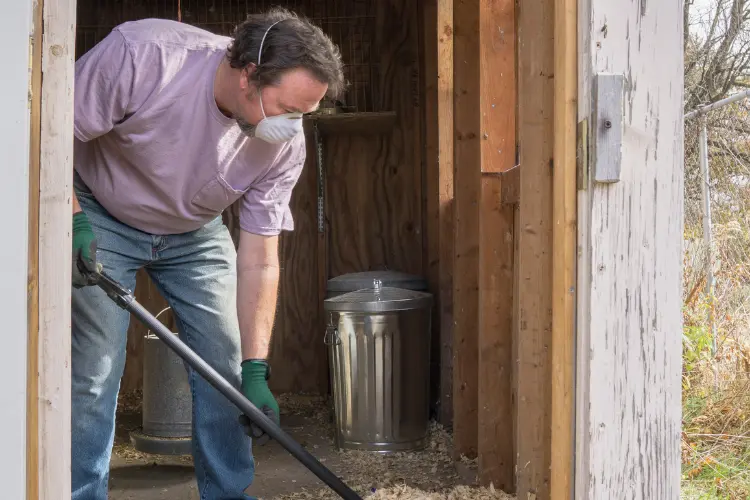
Provide Adequate Ventilation
Proper air circulation helps regulate temperature, reduce moisture, and improve air quality, all of which contribute to better egg production and the overall well-being of the chickens. Stagnant air can lead to increased humidity and ammonia levels, posing risks to respiratory health.
By allowing fresh air to circulate, ventilation prevents overheating during warm weather and reduces moisture, minimizing the chance of mold growth and respiratory issues. Strategic placement of vents for cross-ventilation, the right size and number of vents, and protection from elements ensure effective airflow while safeguarding against predators and pests.
In colder climates, maintaining ventilation while preventing drafts is crucial. Regular maintenance of vents is also vital to prevent blockages and ensure continuous airflow.
Create a Peaceful Environment to Reduce Stress
To achieve this, start by ensuring the coop is safe, secure, and well-ventilated, providing a comfortable and protected space for your flock. Regular cleaning and maintenance maintain hygiene and prevent the buildup of odors or pathogens that can cause stress. Adequate space . good ratio of hens per roosters and access to nesting boxes and perches allow for a sense of order and minimize competition among hens.
Keep lighting consistent with establishing a stable routine, reducing anxiety. Minimize noise and disturbances around the coop, as tranquillity helps chickens feel safe and at ease. A predictable daily routine, including regular feeding times, provides security. Protect the flock from potential predators, and observe and address any aggressive behavior or bullying within the flock to maintain harmony.
Monitor Their Health
Regularly inspecting them for illnesses, injuries, and parasites allows early detection and timely intervention. Observe their behavior, appetite, and overall demeanor daily, and individually check for any physical abnormalities, such as wounds or signs of parasites. Pay attention to their droppings and be vigilant against any changes that may indicate health issues. Quarantine new additions to the flock to prevent potential disease transmission.
Seek veterinary care if needed, and promptly isolate any sick or injured chickens. In raising chickens, maintaining a proactive approach to their health is essential to promote a thriving and productive flock.
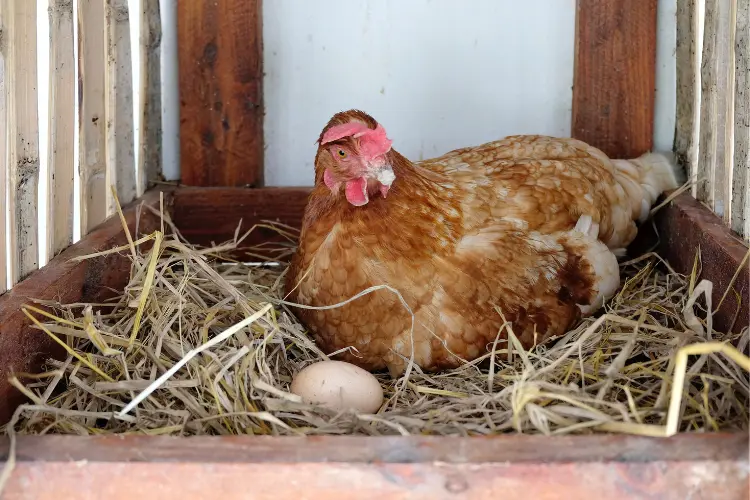
Offer Additional Care When Molting Process.
During molting, chickens undergo a natural process of shedding and regrowing feathers. This period can cause a slowdown or temporary halt in egg-laying. To support your chickens during molting, it’s essential to provide extra protein in their diet. A high-quality layer feed supplemented with protein-rich treats like meal worms, sunflower seeds, or cooked eggs can help meet their nutritional needs.
Additionally, ensure they have access to a warm and dry place to rest, protecting them from harsh weather conditions. Be patient and understanding during this phase, as molting is a natural and necessary part of their life cycle.
With proper care and nutrition, your chickens will successfully navigate through molting and eventually resume egg-laying with healthier and fuller feathers.
Manage Broodiness
Broodiness is a natural behavior where hens desire to sit on eggs and incubate them. However, prolonged broodiness can reduce egg-laying and disrupt normal flock dynamics. To manage broodiness, promptly collect eggs from nesting boxes to discourage the accumulation of a clutch. Use fake eggs or golf balls to deter broody hens.
Provide ample space and perches outside the coop to encourage hens to spend less time in the nesting boxes. Maintain well-ventilated and cooler nesting boxes to discourage broodiness.
Gently remove broody hens from the nesting boxes and redirect their focus to other activities. If necessary, employ a broody breaker method to discourage broodiness. Introducing new chickens to the flock can help break broody behavior.
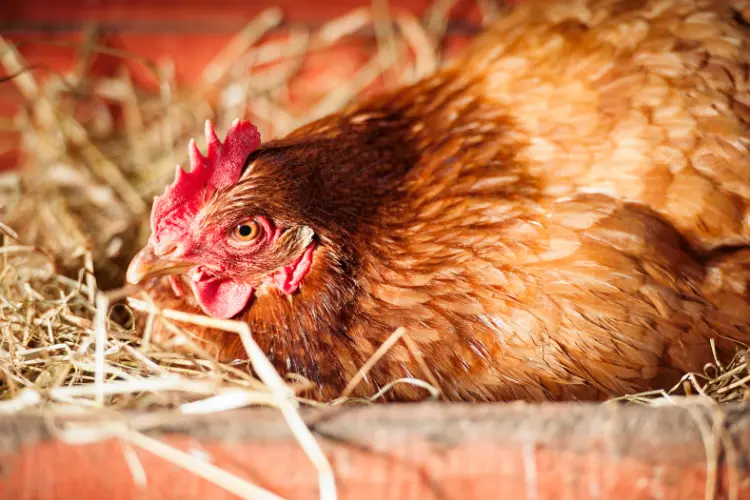
If a hen remains broody after approximately 2 weeks of such intervention, a more direct approach can be taken. One broody breaker method involves soaking the hen in cool water for about 10 minutes, ensuring her abdomen/breast is fully submerged.
The reason behind this is that the cool water brings down her body temperature, which can help interrupt the broodiness. Typically, this method breaks the broody behavior within a few days. It’s essential, however, to monitor the hen closely during this process to ensure she doesn’t become overly stressed.
If the above methods don’t suffice, consider employing the broody breaker method.
Read also: The Best Chick Brooder Guide: 2023’s Hot Picks Revealed
Conclusion
In embracing proven methods to increase egg production, you are not only maximizing their output but also ensuring the health and well-being of your backyard chickens. The techniques outlined contribute to a holistic and sustainable approach to egg farming, enhancing quality and efficiency.
By employing these strategies, you can look forward to more eggs and a profitable future, secure in the knowledge that they are utilizing methods that are responsible, innovative, and effective.

